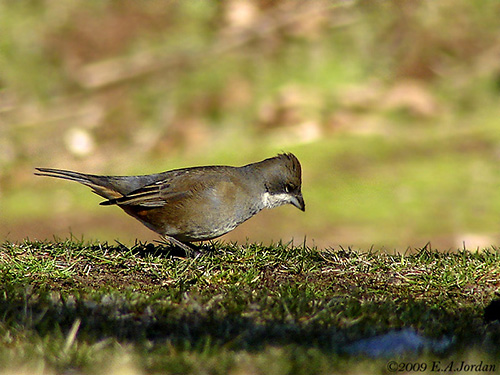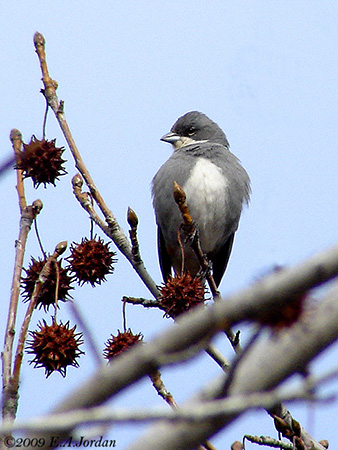
Fr: Diuca gris
Ang: Diuca-Finch - Common Diuca-Finch
All: Diucaammertangare
Esp: Diuca Común
Ita: Diuca comune
Nd: Diucagors
Sd: diucatangara
Photographer:
Eduardo Andrés Jordan
MIS AVES – AVES DE ARGENTINA
Text by Nicole Bouglouan
Sources:
HANDBOOK OF THE BIRDS OF THE WORLD Vol 16 by Josep del Hoyo- Andrew Elliot-David Christie – Lynx Edicions – ISBN: 9788496553781
BIRDS OF SOUTH AMERICA – Passerines - by Robert S. Ridgely and Guy Tudor – HELM Field Guides – ISBN: 9781408113424
Birding Patagonia – Adventure expeditions
Sistema de Información de Biodiversidad de la Administración de Parques Nacionales, Argentina
Fauna y Flora de la Argentina Nativa
La diuca, dulce canto al sur del mundo
Arthur Grosset's Birds (Arthur Grosset)
Wikipedia, the free encyclopaedia
Wikipedia, la enciclopedia libre
Common Diuca Finch
Diuca diuca
Passeriformes Order – Thraupidae Family
INTRODUCTION:
The Common Diuca Finch is found in South America in Chile, Argentina, Bolivia, Brazil and Uruguay. Four subspecies share the wide range. This species is the only member of the genus Diuca in the family Thraupidae.
It is generally common and frequents shrubby areas, cultivated gardens and farmland, forest edges and desert scrubs. It feeds primarily on seeds, but it also takes arthropods during the warmer season.
The Common Diuca Finch is monogamous. The nest is an open cup built in Acacia caven, bushes and thorny or thornless trees, usually in dense foliage to avoid nest-predation. Both parents share the nesting duties.
The Common Diuca Finch has stable population and currently, the species is not globally threatened.
DESCRIPTION OF THE BIRD:
Biometrics:
Length: 16-18 cm
Weight: 25-41 gr
The Common Diuca Finch adult male has plain dark grey upperparts, but the back is washed olive whereas lower back and rump are blue-grey. On the wings, the upperwing-coverts are grey with darker centres and paler edges, while the flight-feathers are blackish with grey edges. On the brownish-grey tail, the central rectrices are blackish, and the outer tail feathers show blue-grey margins and a broad, white terminal bar. In flight, this pattern creates large white tail corners.
On the underparts, chin, throat and malar area are white, contrasting with the broad, dark grey breast band. Sides of breast and flanks are dark grey, and contrast with the white belly and vent. The white of belly extends upwards in inverted V-shape into the grey breast. The lower flanks are tinged buffy, becoming rusty behind the legs. The undertail-coverts are washed rusty.

On the head, crown, nape and hindneck are as upperparts. Chin, throat and malar area are white.
The bill is blackish, with pale blue grey lower mandible. The eyes are dark brown. Legs and feet are brownish-grey to blackish.
The adult female resembles male, but she has tinged olive or brownish plumage, and the rusty colours of flanks are paler and less extensive.
The immature is dull and brownish but with similar pattern to that of female, and the vent is mostly buff (not rufous).
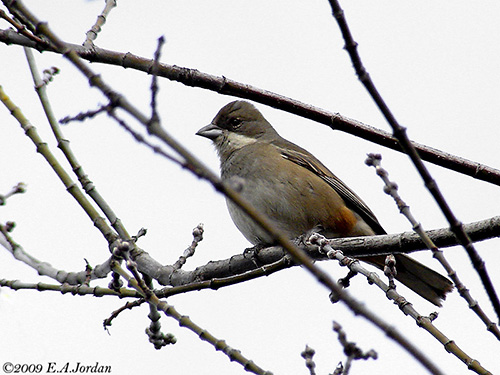
SUBSPECIES AND RANGE:
The Common Diuca Finch has four subspecies.
Diuca diuca diuca (described above) is found in the Andes of C Chile and C Argentina (Mendoza to Santa Cruz).
Diuca diuca crassirostris is found in NC Chile, extreme S Bolivia and N Argentina.
This one is the largest of all subspecies, with larger and thicker bill. On the tail, the outer webs of the outermost rectrices are totally white.
Diuca diuca chiloensis is present on Chiloé Island.
It is smaller than nominate, with more intense and saturated coloration.
Diuca diuca minor is found in C and S Argentina (Cordoba to Santa Cruz) and S Chile (N Magallanes).
During the non-breeding season, it occurs in N to NE Argentina, S Brazil and Uruguay.
This one is the smallest of the subspecies. The back of the male is washed brownish, making it very similar to a female or a juvenile.
HABITAT:
The Common Diuca Finch is found in pairs or in small flocks in open woodland, shrubby areas and arid lowland scrub.
Within these habitats, it can be found in shrubs, cultivated gardens and farmland, forest edges and desert scrub. They are usually found below 2,000 metres of elevation, although they can be observed up to 3,600 metres in NW Argentina.
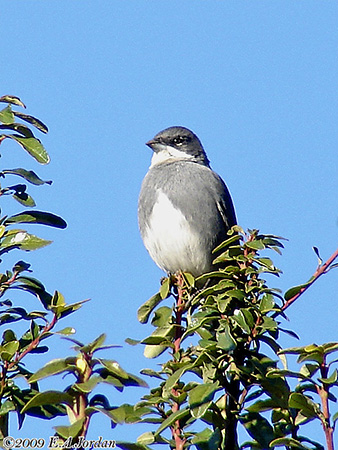
CALLS AND SONGS: SOUNDS BY XENO-CANTO
The Common Diuca Finch is described as an excellent singer. It sings mainly in the morning. During the breeding season, it can be heard before dawn, singing from elevated perches in trees and bushes.
The song is slow, melodious and continuous, and lasts 2-4 seconds. The main phrase is “tuuip tweep chwuup” also described as “chit, chuuit, chuuit-chiu, chuuit”. The final note is usually more accentuated.
The call is a sweet “tweep”.
BEHAVIOUR IN THE WILD:
The Common Diuca Finch is usually seen in pairs or family groups and in small flocks during the non-breeding season.
It feeds on seeds found on the ground, vegetables and some arthropods, especially during the nesting period. It may occasionally take fruits. But it usually consumes a wide variety of arthropods.
This species forages by walking on the ground, although in warmer season, arthropods are often caught on low shrubs.
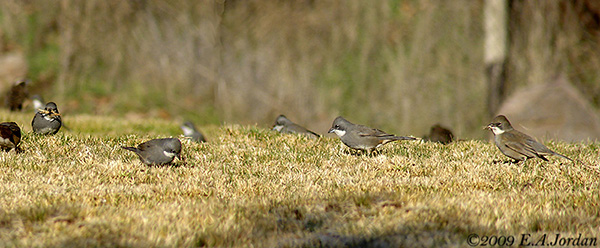
The Common Diuca Finch is socially monogamous. During the breeding season, it becomes more aggressive while defending the territory.
The nest is a cup-shaped structure placed at low or medium height in bushes or leafy trees. However, some observations mention nests placed in cavities in buildings and in old nests of Furnariidae (Page 3). Both adults share the nesting duties.
This species is mostly resident, but the subspecies D.d. minor is suspected to be partially migratory in Argentina.
The Common Diuca Finch is recorded from NE Argentina, Uruguay and S Brazil, but only in winter.
In flight, it is easily recognizable by the white terminal tail band and markings.
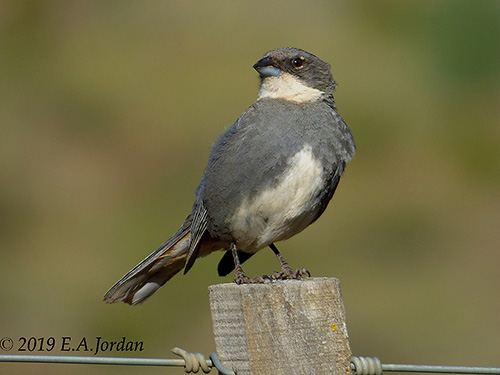
REPRODUCTION OF THIS SPECIES:
The Common Diuca Finch is solitary nester. The breeding season takes place from September to February in Chile where several broods are recorded, whereas in Argentina, this period extends from November to January with only one brood.
The nest is an open cup made with thorny sticks from Acacia and Trevoa, and also dry grass and plant fibers. The cup is lined with softer material such as wool, animal hair or feathers from other bird species.
It may occasionally use abandoned nests of Furnariidae (Page 3). The nest is usually placed in shrub or small tree, around 1,60/1,80 metre above the ground. It is often in Acacia caven, thornless or thorny trees, but it prefers thornless trees with dense foliage to protect the nest-site from predators.
The female lays 2-4 pale greenish-blue eggs with greenish or olivaceous markings. Both adults share the incubation during 13-14 days. The chicks are fed by both parents and fledge 9-10 days after hatching.
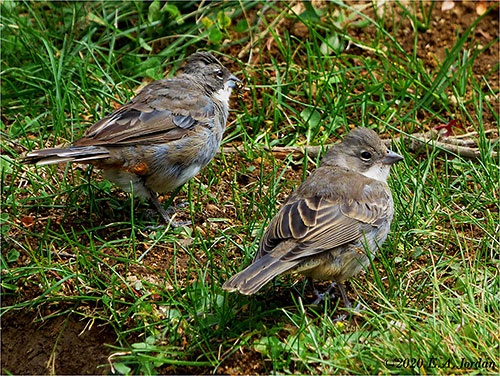
The nests of the Common Diuca Finch are often parasitized by the Shiny Cowbird.
The main bird predators are the Chimango Caracara and the Austral Pygmy-Owl. But some others are Marmosa elegans (mouse opossum), Callopistes palluma (iguana), and the snake Philodryas chamissonis.
PROTECTION / THREATS / STATUS:
The Common Diuca Finch has extremely large range in which the population (not quantified) is suspected to be stable, although some decrease of the numbers has been caused by intensive agriculture, especially since 1990.
The Common Diuca Finch occurs in several protected areas such as National Parks, both in Chile and Argentina.
The species is not considered globally threatened, and currently evaluated as Least Concern.
